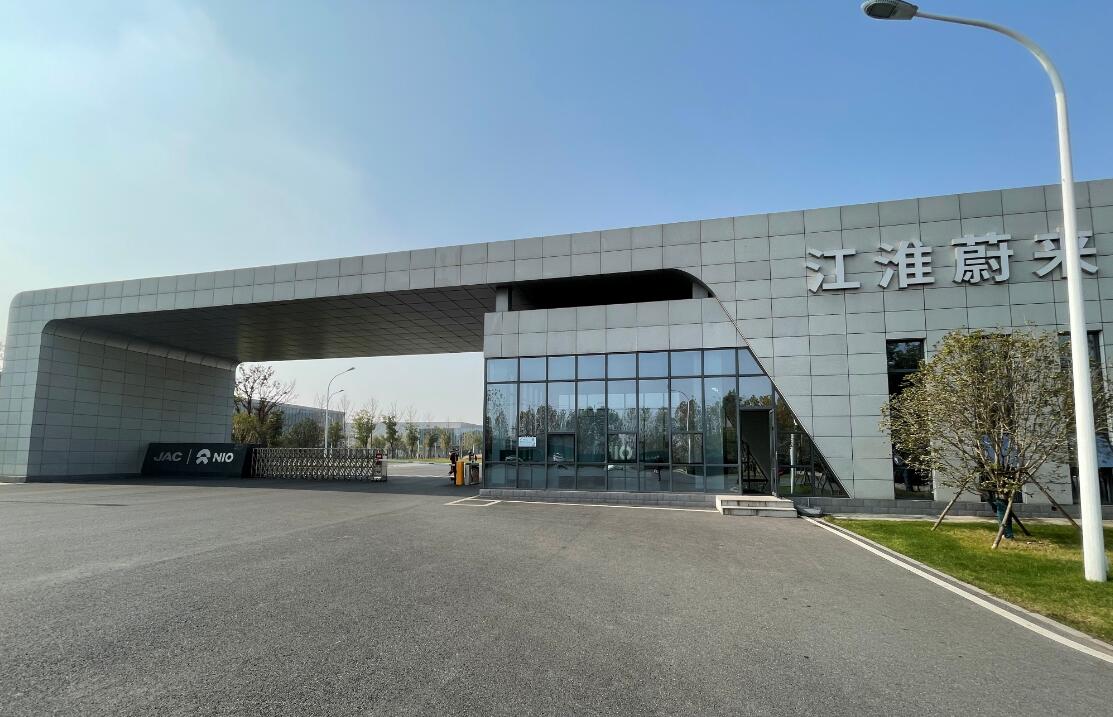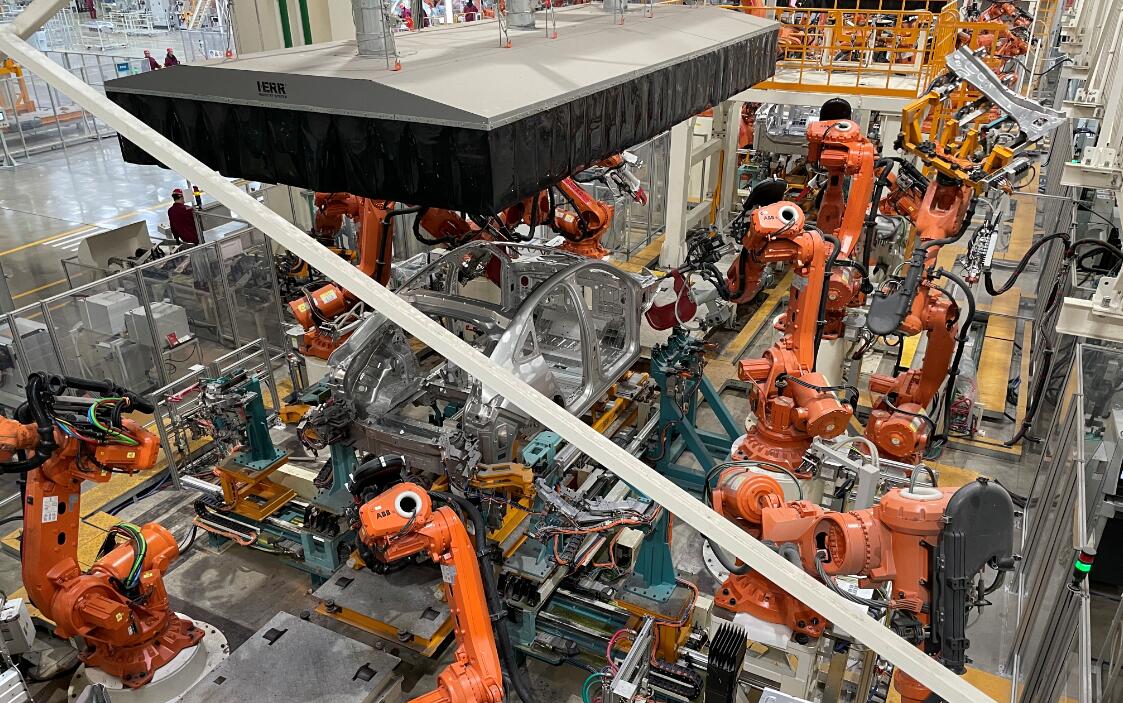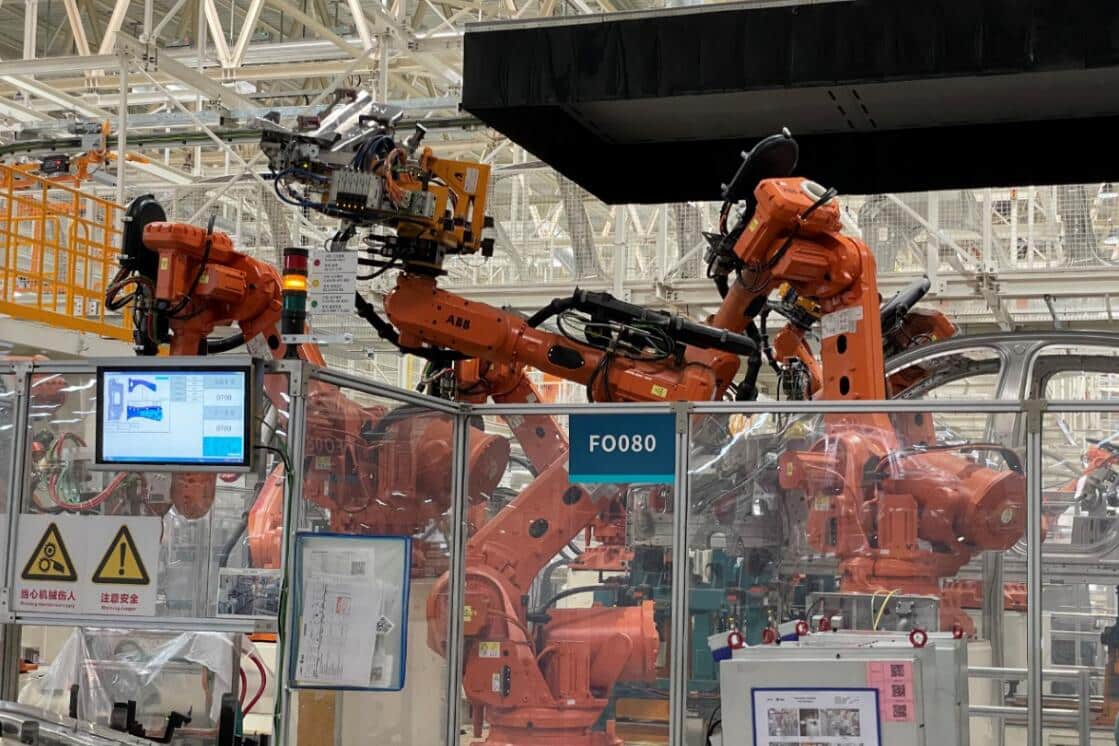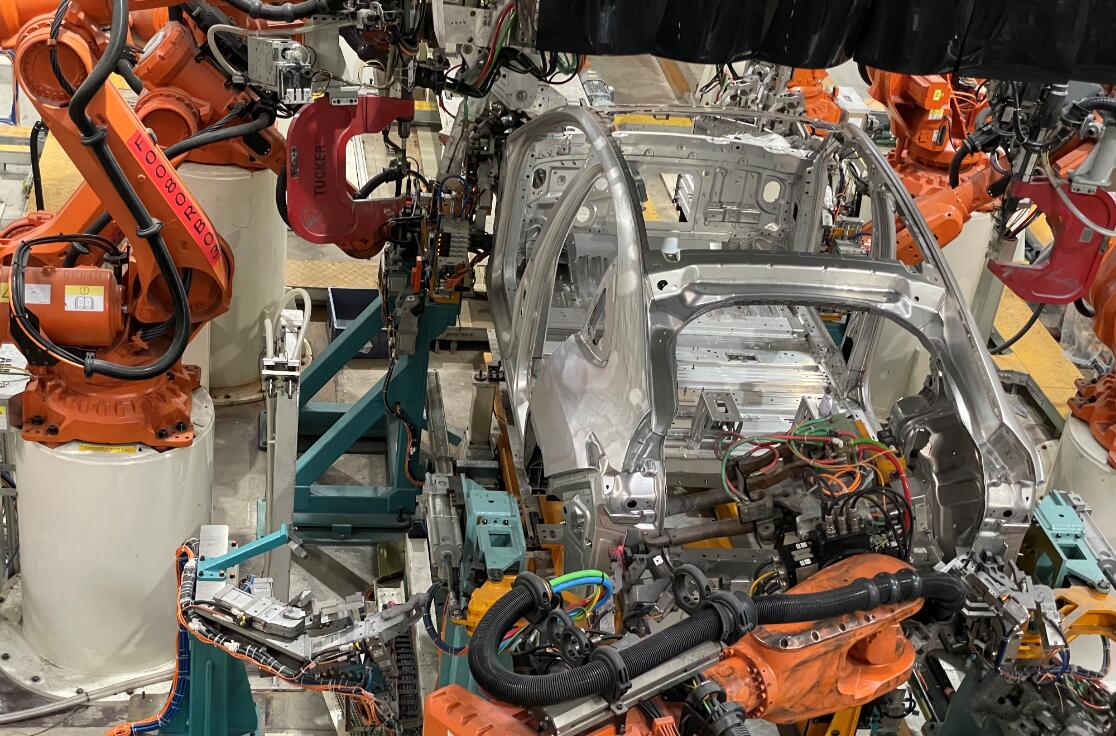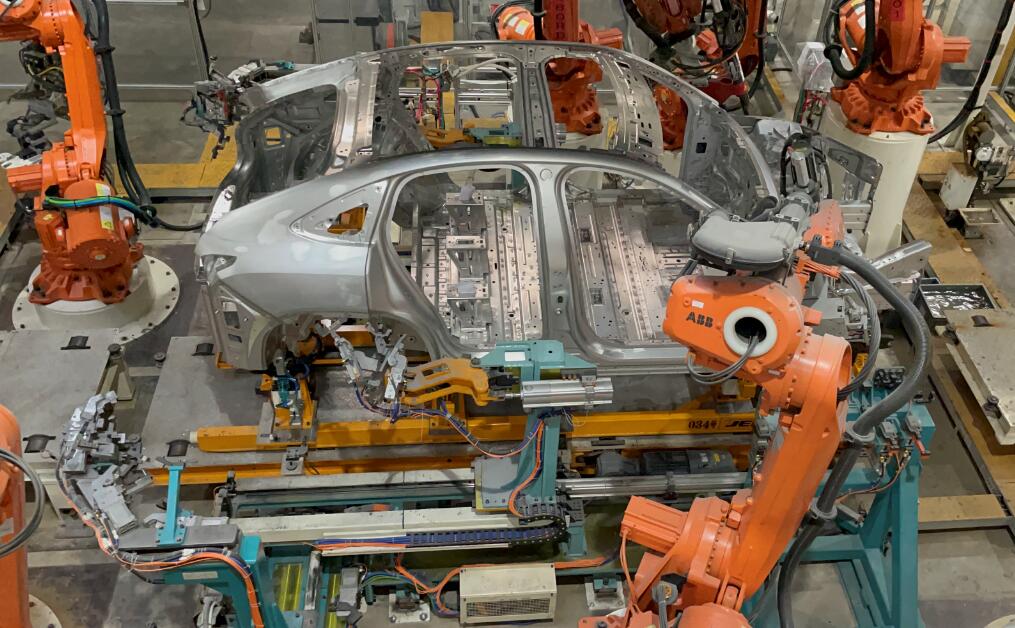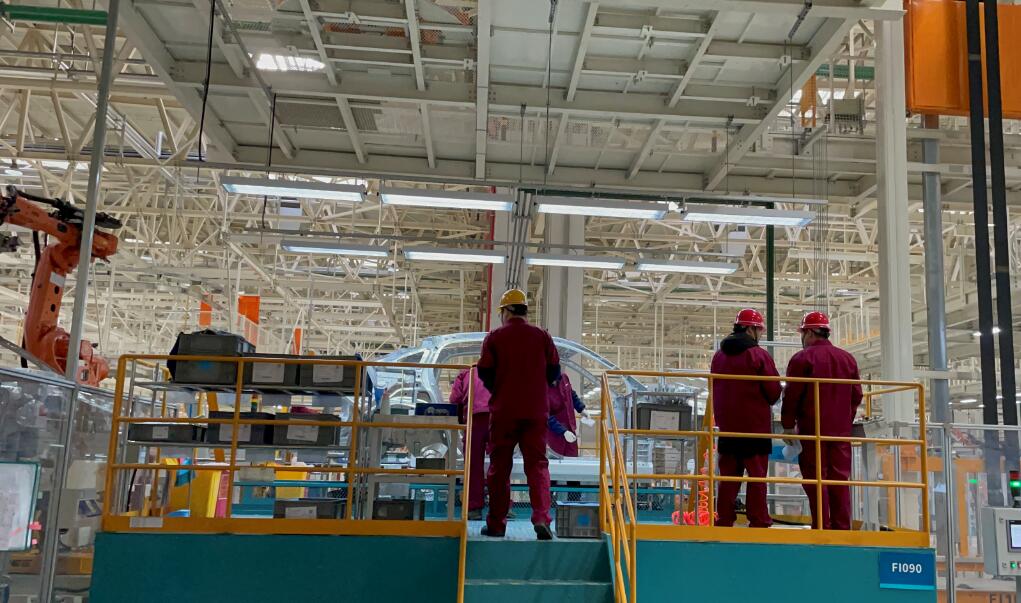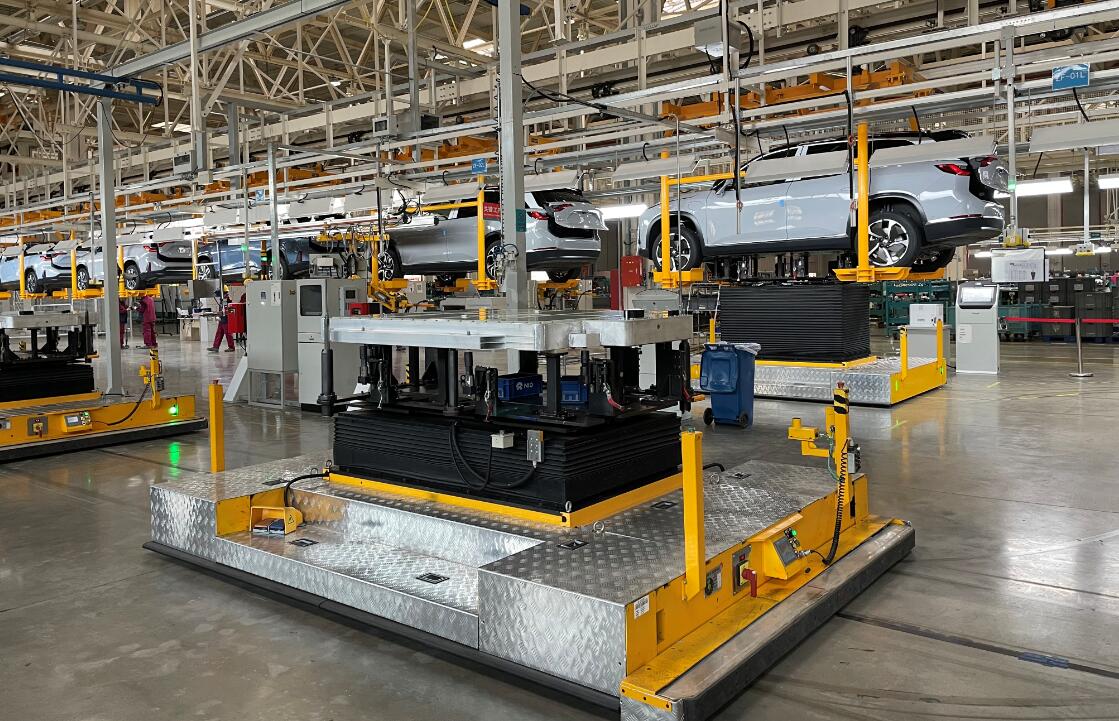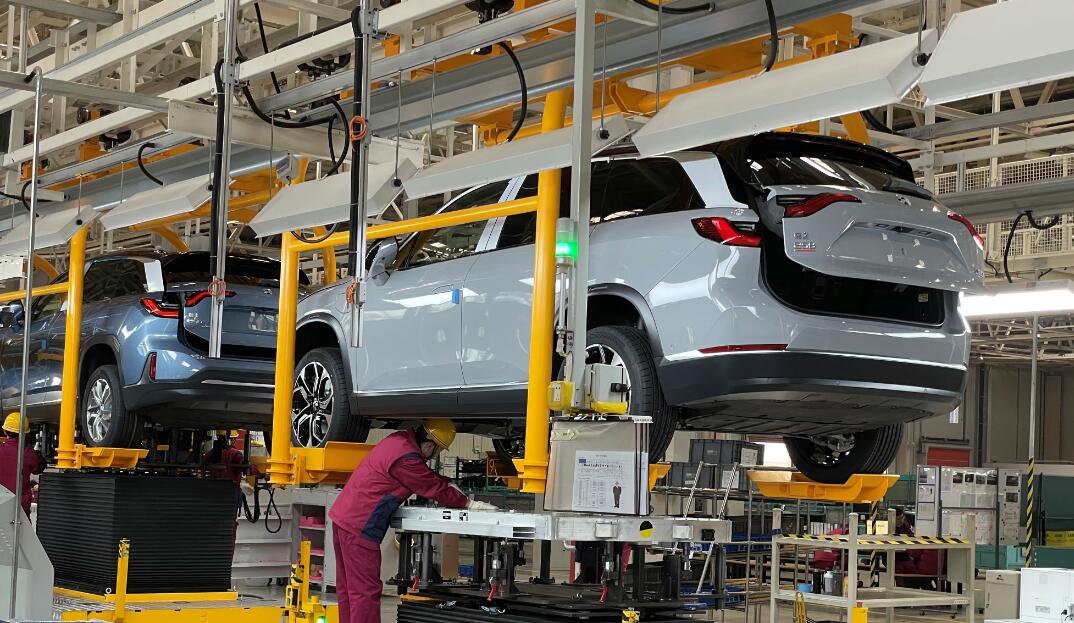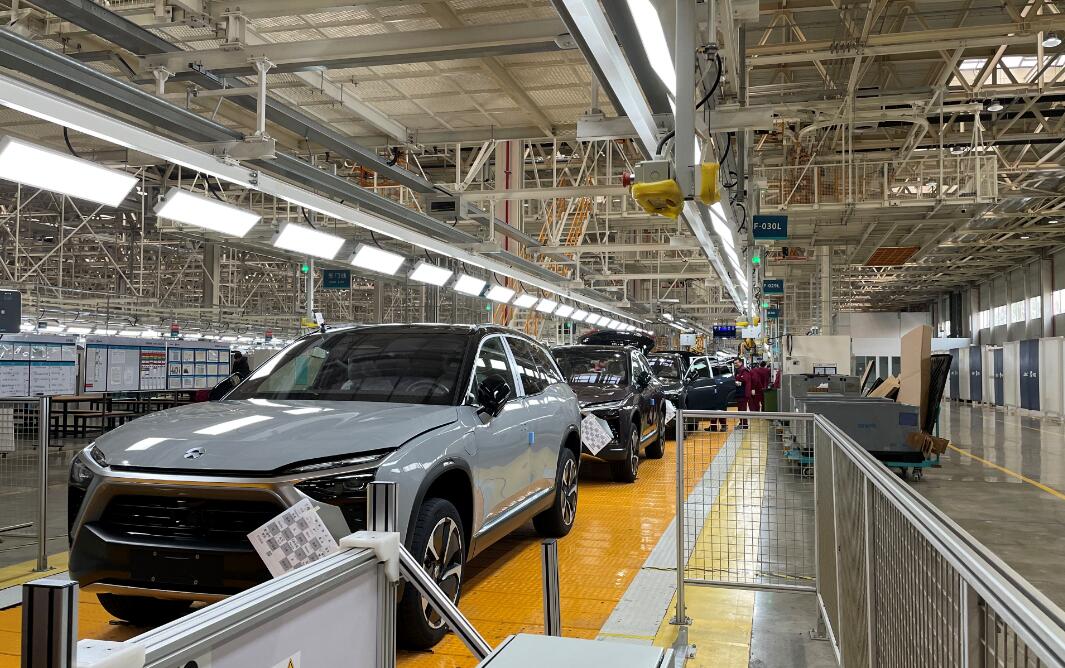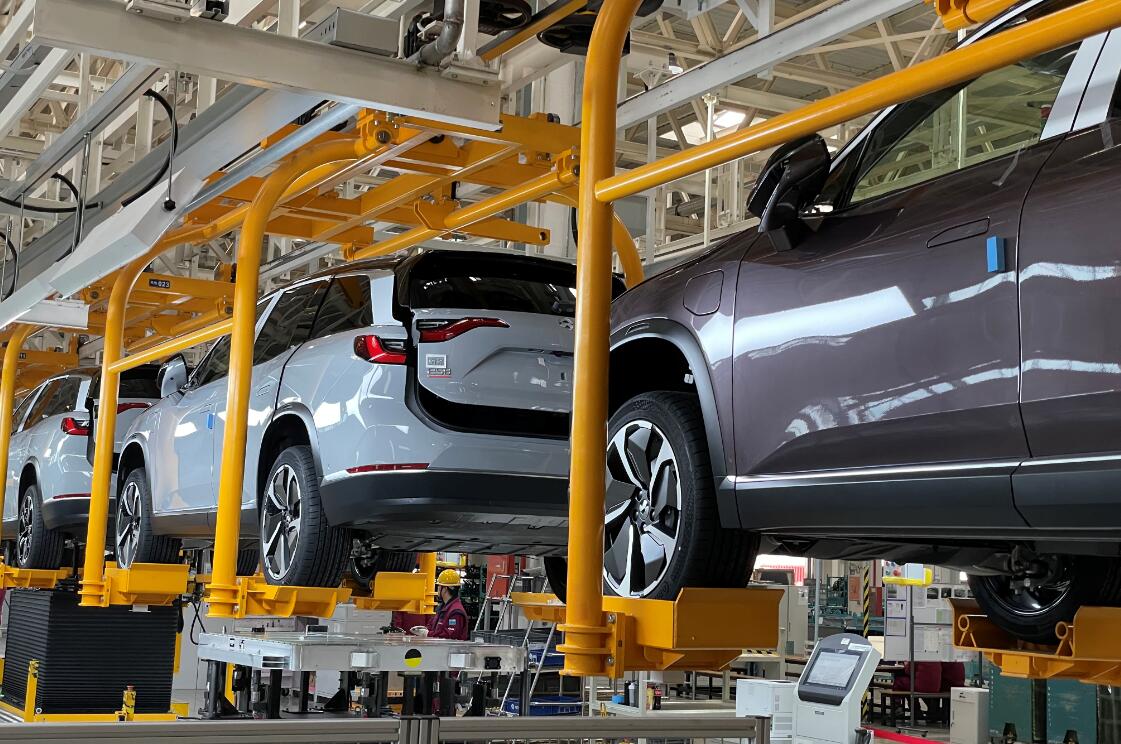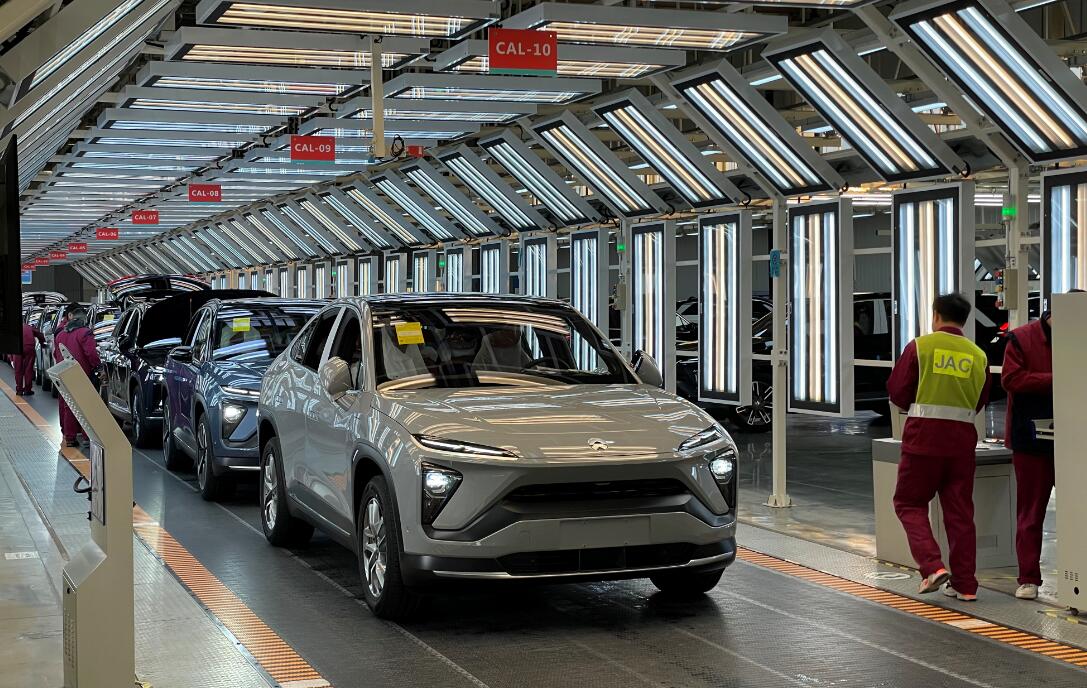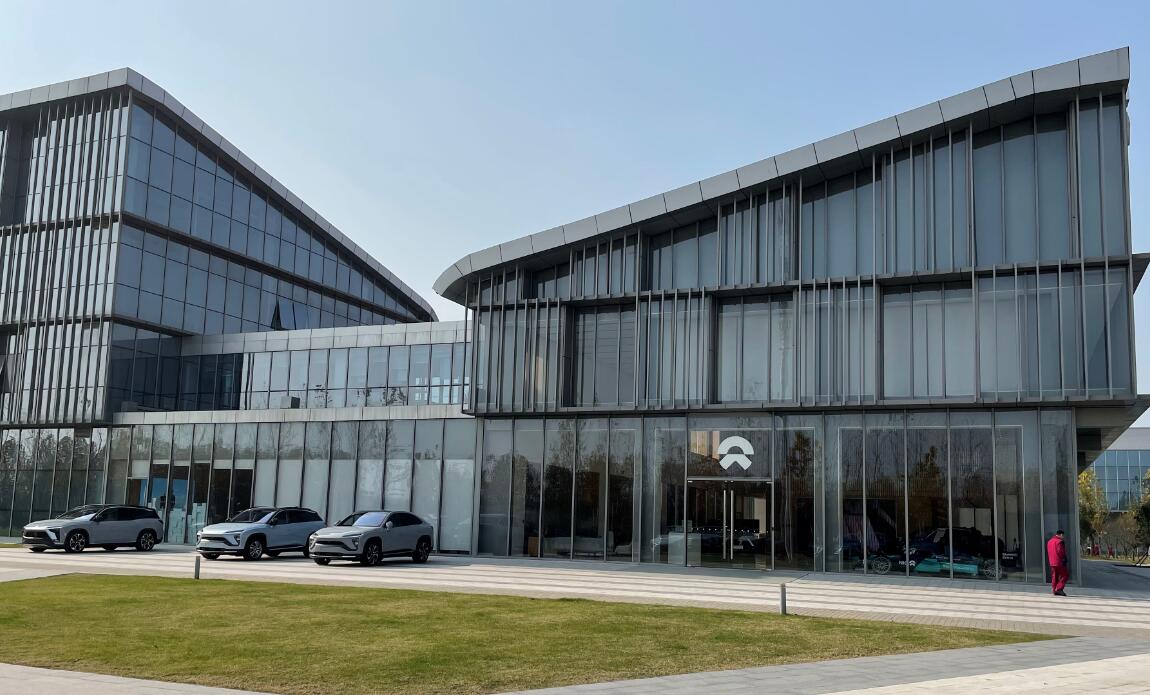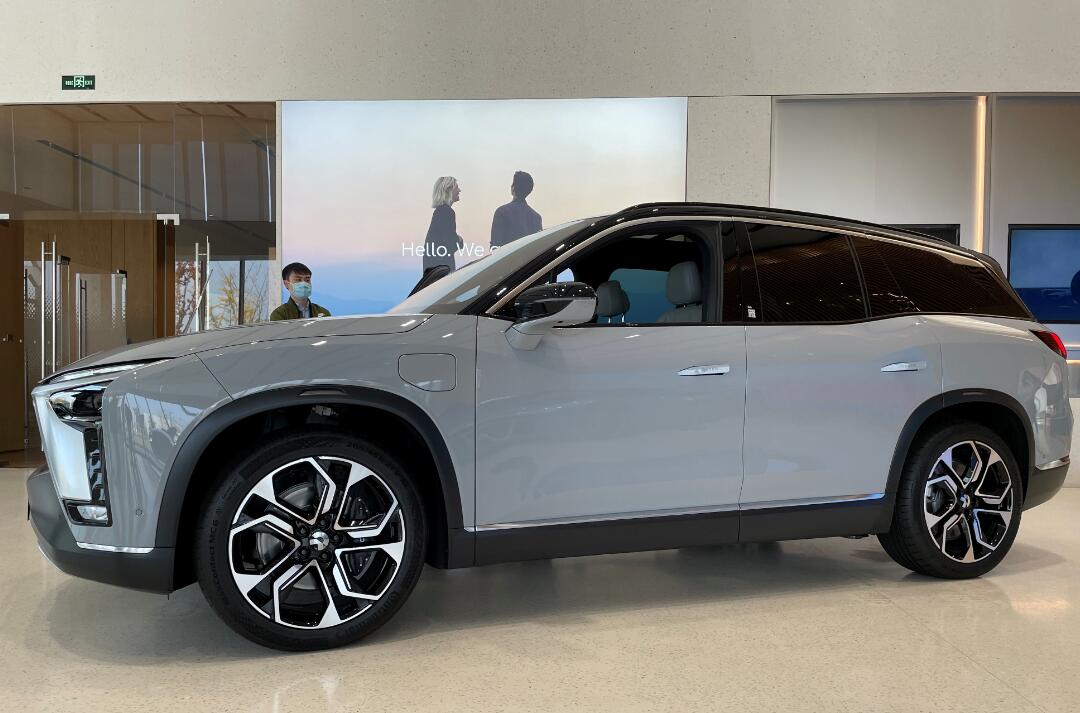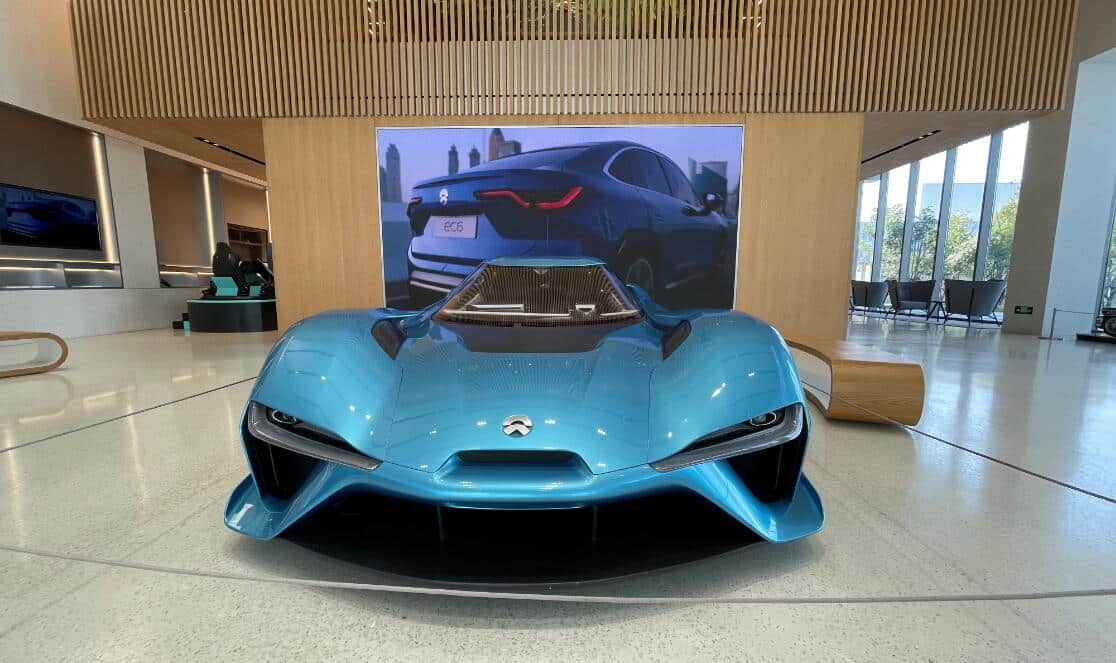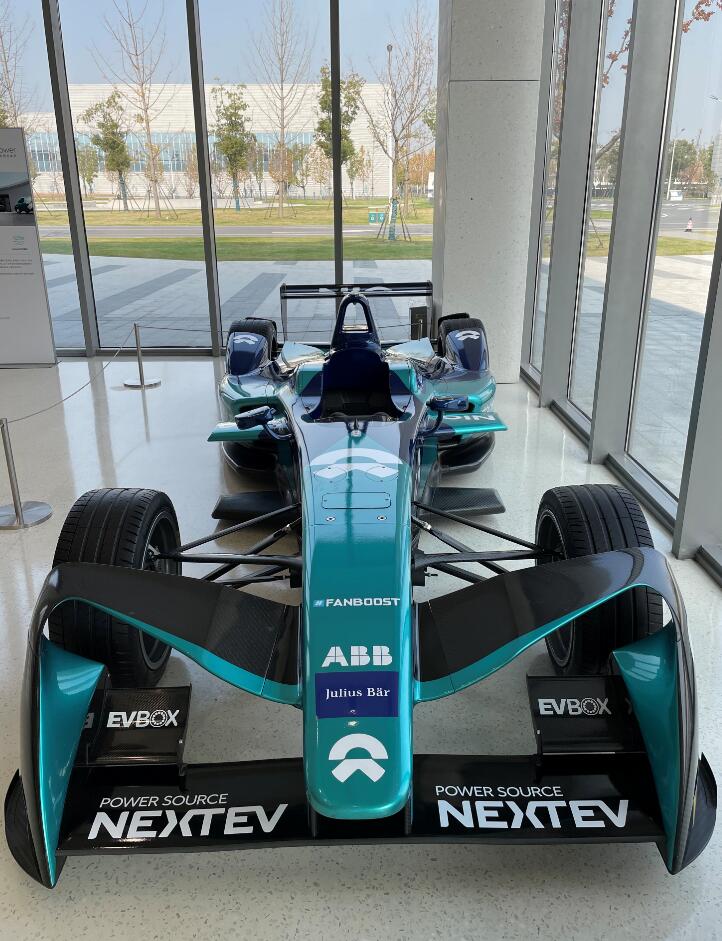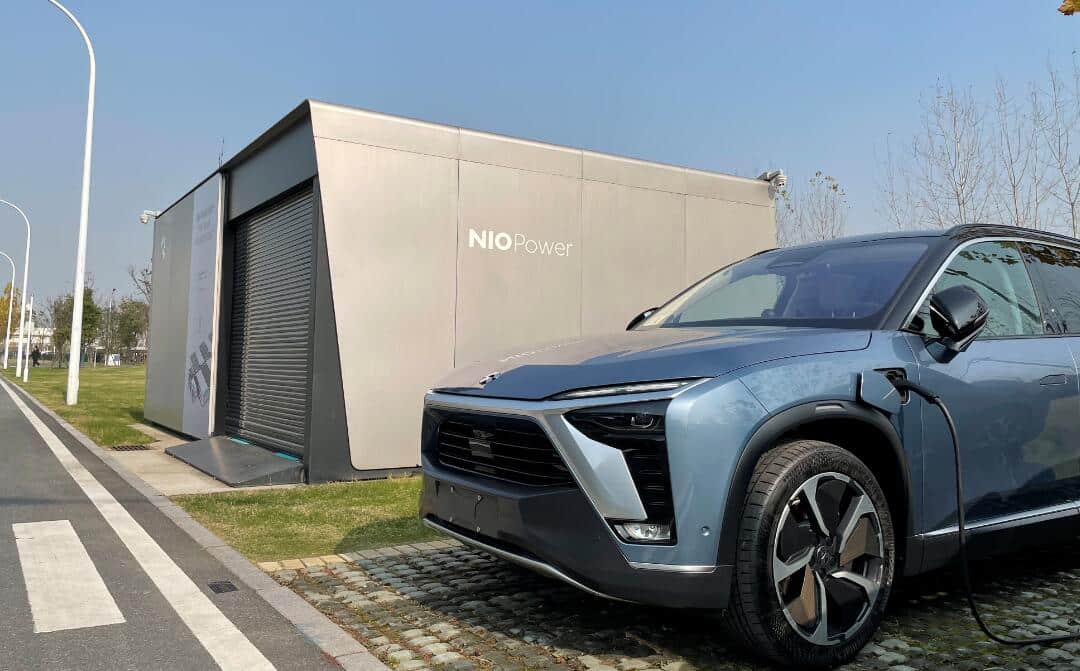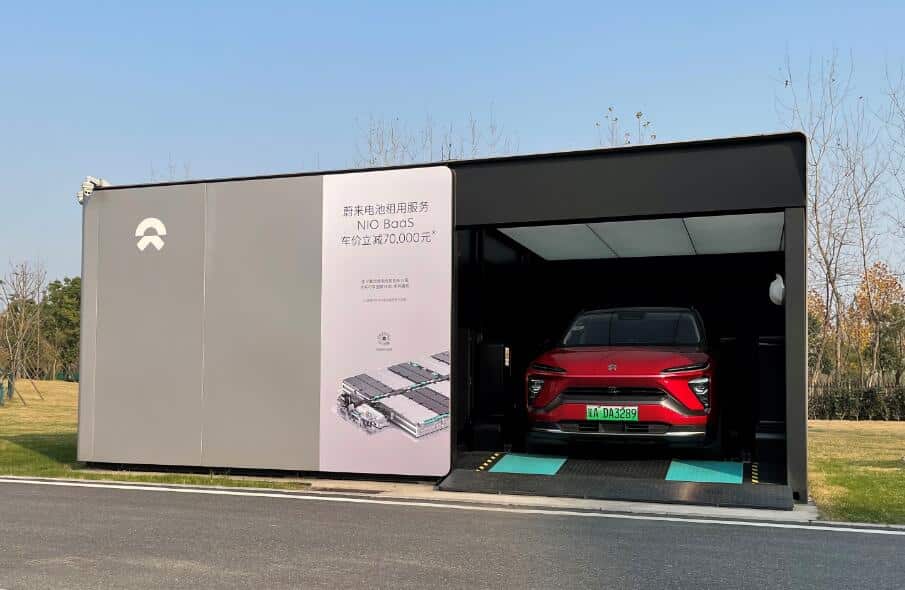Nio founder William Li Bin said Nio's new factory in Hefei is of a very high standard. So what's the reality? On December 4, cnTechPost paid a site visit to the plant and got some answers.
"The Porsche factory is not as good as the Nio factory in JAC." Two years ago, Nio founder William Li Bin made this statement, which is still being mentioned a lot in the media today.
Li made the remark in an interview with CCTV in October 2018. Because it was controversial, it was subsequently widely circulated on Chinese social media.
Subsequently, Li clarified that he had visited the Porsche factory in Stuttgart and that it was unfair to compare the new factory built in 2018 with one built a long time ago, and that he only wanted to emphasize that Nio's new factory in Hefei is indeed of a very high standard.
So what's the reality of the "very high standard " he spoke of? On December 4, cnTechPost paid a site visit to the plant and got some answers.
(Nio's advanced manufacturing base in Hefei, central China's Anhui province. Photo/cnTechPost)
China's newest all-aluminum body production line
The new electric vehicle manufacturing base, jointly built by Nio and JAC, is located in the Hefei Economic and Technological Development Zone, a 2.5-hour high-speed rail ride from Shanghai or a six-hour drive from the city.
It covers an area of about 839.6 acres, with a total construction area of about 230,000 square meters, and is built to the highest standards in the industry, Nio says, with China's newest all-aluminum body production line.
Construction of the site began in October 2016 and it was officially put into operation in the second half of 2017. It features four process workshops - stamping, bodywork, painting, and final assembly - as well as a quality center, test track, energy center, Nio Center, and general office space.
The Hefei advanced manufacturing base currently has more than 2,000 JAC technicians and more than 200 engineers from Nio's manufacturing, quality, supply management, and R&D fields who had previously worked at various world-renowned automakers, such as Volvo, Mercedes-Benz, and BMW.
According to Nio, these people ensure that every ES8 and ES6 rolls off the production line in the best possible condition, based on the high standards defined by Nio. The 200 people from Nio may be reduced to 120 in the future as the plant becomes more mature.
The base is built to order, with an annual capacity of 100,000 smart electric vehicles, and is scalable. As of November 30, 2019, Nio has delivered a total of 26,215 ES8 and ES6 units.
(Nio plant in Hefei. Photo/cnTechPost)
No sparks, dust, debris, smoke
According to Nio, the ES8 uses 96.4% aluminum, the highest percentage of aluminum used in an all-aluminum body in mass production worldwide. This compares to 75 percent for the Jaguar XFL and 58 percent for the Cadillac CT6.
Traditional steel bodies are primarily welded, with sparks flying all the way, along with heavy dust, smoke, and burning odors.
(Nio plant in Hefei. Photo/cnTechPost)
When cnTechPost followed the Nio staff into the all-aluminum body shop, the most intuitive impression was that it was quiet and clean because the all-aluminum joint mainly adopts riveting technology, the temperature is suitable and the noise is low.
At the same time, the workshop is equipped with a dust-removal device in some of the joining stations, which will treat the spot welding area, arc welding area, laser welding area, and the trace fumes and dust generated during the welding process, so that the whole workshop meets the requirements of environmental protection.
High-level automation
At Nio Hefei. So many robots. pic.twitter.com/5IBcUorT6j
— cnTechPost (@cnTechPost) December 4, 2020
With the support of Nio's partners, including ABB of Sweden, ARO of France, DEPRAG of Germany, and Stanley Baird Group, 307 robots have achieved 100% automation of the main connections in Nio's bodywork, with an overall workshop automation rate of 97.5%.
As China's first positive development of the first lightweight body platform, the ES8's body-in-white adopts an all-aluminum frame, which is about 40% lighter than traditional steel bodies (density of steel 7.8 g/cm3> aluminum 2.7 g/cm3).
Normally, the body-in-white would account for about 27% of the total vehicle weight, but this figure is compressed for an all-aluminum body, and the Nio ES8's body-in-white weight is 13.6% of the total vehicle weight on a proportional basis.
The reduced weight reduces the load on the powertrain, improves power acceleration, and allows for significant improvements in braking, steering, and energy consumption. The reduced body-in-white weight also allows for greater freedom in fitting other luxury features to the vehicle at a later stage.
At Nio factory. A better view. pic.twitter.com/XEL9ol3aN0
— cnTechPost (@cnTechPost) December 4, 2020
To ensure the strength of the car, Nio says the ES8 body-in-white uses a combination of 3-series, 5-series, 6-series and 7-series aluminum. The No. 7003 aluminum is used in the ES8 in six pieces, including the main front and rear longitudinal beams and the front energy-absorbing box.
The 7003 aluminum has high strength, excellent impact toughness and energy-absorbing performance, and is mostly used in landing gears of civil aircraft, military equipment, armor plates and missile devices.
(Nio plant in Hefei. Photo/cnTechPost)
There are a total of 16 ABB robots in the external body splicing station, which Nio says is the most complex station in the body shop's process operation.
It consists of four loading robots, eight self pierce riveting (SPR) robots, two FDS robots, and two aluminum spot welding robots operating simultaneously via PLC program control.
(Nio plant in Hefei. Photo/cnTechPost)
Nio's SPR technology, introduced from the aerospace industry, requires only an air source, no recirculating water cooling, and no contaminants in the entire process, enabling aluminum connections of different thicknesses and structures.
Nio battery installation. pic.twitter.com/5I81dyPVYM
— cnTechPost (@cnTechPost) December 4, 2020
(Nio plant in Hefei. Photo/cnTechPost)
Compared to the 780 mm weld throat thickness of the Chery Jaguar Land Rover, the SPR here has a 980 mm weld throat thickness, which is the largest in Asia and is thus capable of meeting the riveting requirements of a large vehicle such as the ES8.
(Nio plant in Hefei. Photo/cnTechPost)
According to Nio, the SPR rivet guns are expensive, costing more than RMB 800,000 yuan ($122,480) per gun, and there are 127 of them in service today.
In addition, the robot monitors 167 critical body dimensions using industrial sensors from Basler, Germany. The robot automatically collects measurement data, even in the most complex lighting conditions, to avoid and reduce substandard products.
(Nio plant in Hefei. Photo/cnTechPost)
Victor Gu, General Manager of Nio Hefei Advanced Manufacturing Center, says the plant's overall equipment efficiency, which was less than 50 percent when it was first built, is expected to rise to 98 percent in one to two years, which is two to three times faster than that of traditional automakers.
Green factory
The assembly roof has 512 fully-automatic transparent skylights of 16.2 m² in size, which allow maximum use of natural light for the lighting of the plant.
The roofs are also equipped with photovoltaic panels to maximize the use of natural energy, reducing the total energy consumption of the assembly plant by 20%.
In addition, the final assembly plant uses ground source heat pump technology for temperature control, with a total of 116 individual air conditioning modules installed. By using water from 120 meters below ground for heat exchange, the plant's body temperature is always kept at a constant and comfortable temperature.
(Nio plant in Hefei. Photo/cnTechPost)
Innovative control module writing strategy
Nio claims to be a user-centric company, and therefore its products are defined with the future of automotive in mind: "Software Defines Hardware".
All Nio models have OTA functionality, ensuring that the user experience is continually enhanced as new software features are introduced.
(Nio plant in Hefei. Photo/cnTechPost)
In order to achieve this, Nio not only develops its own smart gateway, smart cabin, and automatic driving assistance systems but also adopts a different strategy for writing in-car control modules than traditional brands.
The traditional brand control module is usually pre-written by the supplier and then shipped to the factory, where it is installed and electrically connected before being diagnosed and activated.
However, Nio requires the supplier to bring in the latest version of the supplier's software, and then Nio will write the latest program for the whole vehicle after installation, and perform interconnection and testing.
This is because traditionally, for each round of OTAs, it is necessary to ensure that the suppliers of the relevant modules also develop, debug, and write the new version of the software, as well as to coordinate with the delivery of the new version of the parts in order to update it properly - only a few modules will be written in the factory.
Nio's approach takes the freedom to update software into its own hands, regardless of the supply chain's ability to synchronize.
There are 35 control modules in the Nio vehicle that need to be written in the factory, and the total time required is 48 minutes. The JAC Nio factory has a total of 18 software writing stations in the final assembly workshop. In comparison, traditional automakers usually have less than 5 writing stations.
The Nio Center inside the advanced manufacturing base:
(The Nio Center inside the advanced manufacturing base. Photo/cnTechPost)
(An Nio ES8 exhibited at the Hefei Nio Center. Photo/cnTechPost)
(Nio EP9. Photo/cnTechPost)
(Nio has been participating in the ABB FIA Formula E since 2014. Photo/cnTechPost)
(A battery swap station inside the advanced manufacturing base. Photo/cnTechPost)
(A battery swap station inside the advanced manufacturing base. Photo/cnTechPost)

